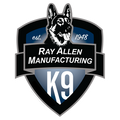Should you use real drugs or pseudo drugs to train your dog?
Apr 24th 2017

by Andrew Weiman
For court purposes, using real drugs for detection dog training is always better. Drugs that have been qualitatively tested to be cocaine for example, and not some other additive will make a better court presentation.
I participated in a study with Dr. Kenneth Furton in the mid to late 90’s. Dr. Furton was determining if a dog’s indication to currency was usable in court to prove the currency’s direct contact with cocaine. The belief at the time was that all currency was contaminated with cocaine and that any such indication was useless.
During this study Dr. Furton had to determine exactly what odors were in cocaine and to what odor the dog was indicating. Dr Furton found that street cocaine was not pure, it contained several chemical impurities. Dr. Furton also found that dogs cannot detect pure cocaine. Cocaine acts as a local anesthetic and blocks the ion channels that send the electrical stimulation from the cell body to the brain. The dog cannot detect the cocaine molecule directly. To be perfectly accurate, dogs only find an impurity in cocaine not actually cocaine molecules.
From the dozens of possible compounds, Dr. Furton then determined what odor in cocaine the dog was detecting. Through field tests, it was determined that Methyl Benzoate was the dominant cocaine odor chemical. Headspace tests revealed that Methyl Benzoate is the dominant volatile component in street cocaine.
This Methyl Benzoate odor chemical seems to be formed through the chemical process used to make the cocoa plant into cocaine HCL and continues when cocaine is in the presence of the solvents used in the process. Methyl Benzoate is found in different amounts in purified cocaine and street cocaine, smaller amounts in purified cocaine and larger amounts in street cocaine.
Dr. Furton further determined that Methyl Benzoate is not commonly found in normal everyday life. Where it was found, it was in such small concentrates, that it was undetectable.
Pseudo cocaine made by Sigma is and has been made with the odor chemical Methyl Benzoate.
This study seems to say that dogs detect the same odor in street cocaine that they do in pseudo. This leads me to believe that from a training perspective it likely doesn’t matter which substance you use to train your dog, they are detecting the same odor with each substance. Pseudo drug odor can have a larger odor of Methyl Benzoate and used in repetition can train your dog to limit their response to a high threshold of target odor. Given that you can vary the amount of Methyl Benzoate odor from large to small it should not be a problem. But, it is always better to train with the odor you will find in real life deployments.
Be sure that the substance you are using to train your dog emits the correct odor. If you are using pseudo drug odors you should be okay if you are using real street drugs you should be okay as well, just be sure another additive has not been introduced. A qualitative test done from a state or local lab can easily determine this for you.
Given your real street drugs used for training are free of any extra additives, this study leads me to believe that using real street drugs provides no additional threat to the reliability of your dog.
You can have a more detailed explanation of this concept and hear it directly from Dr. Furton himself. Contact HITS Training & Consulting and set up a class.
Andrew Weiman has over 20 years of K9 experience since training his first drug dog with Canadian Customs. Working with a specialty drug investigation unit in south Florida, Detective Weiman has become a leading expert in the field and has overseen the training of a variety of detector dogs.





